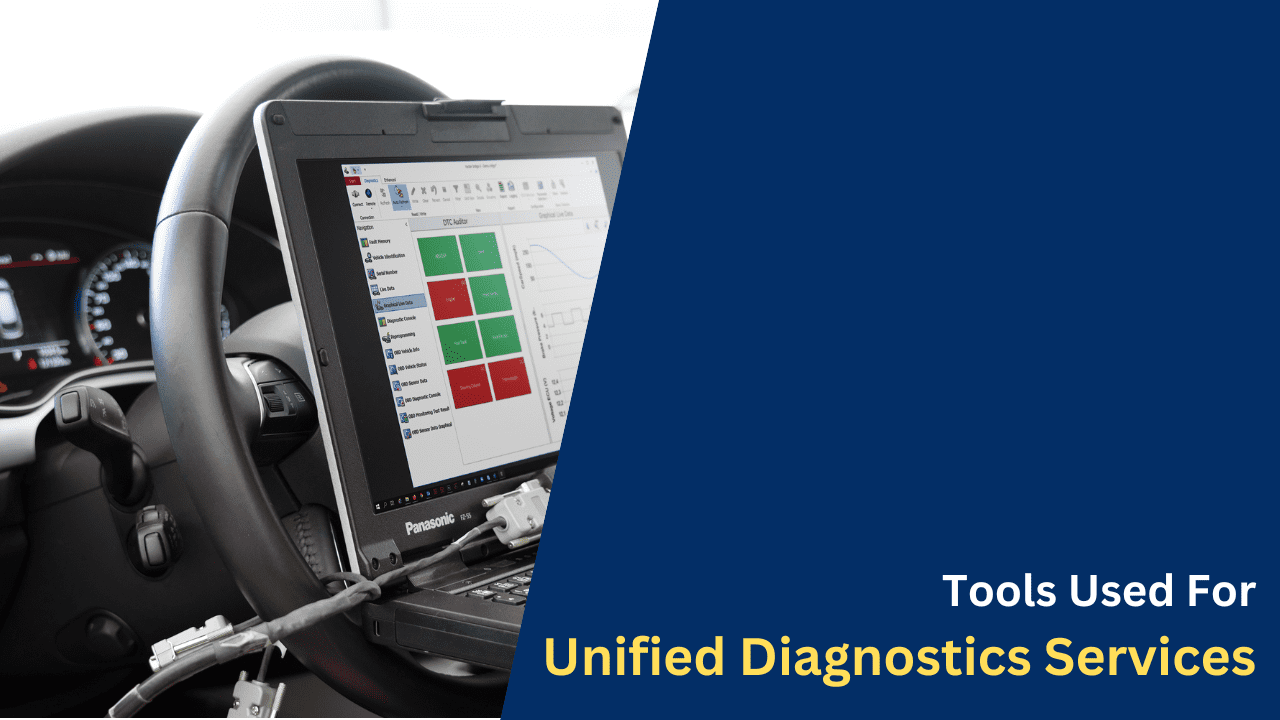Tools Used For Unified Diagnostics Services
Hello guys, welcome back to our blog. In this article, we will discuss the types of tools used for Unified Diagnostics Services, which tool is most efficient for requesting UDS services, and the different terms involved.
Ask questions if you have any electrical, electronics, or computer science doubts. You can also catch me on Instagram – CS Electrical & Electronics
Also, read:
- Different Types Of NRCs (Negative Response) In UDS
- Difference Between CAN And CAN TP (Transfer Protocol)
- Advanced Technologies In-Vehicle Infotainment Systems
Tools Used For Unified Diagnostics Services
Unified Diagnostic Services (UDS) is a communication protocol widely used in the automotive industry to diagnose, test, and communicate with Electronic Control Units (ECUs). It is part of the ISO 14229 standard, providing a standardized approach for diagnostics, making it easier for automotive engineers to interact with various vehicle subsystems. UDS allows for services like reading diagnostic trouble codes (DTCs), performing ECU programming, managing data, and more. As vehicles become more complex, with multiple interconnected systems, UDS has become crucial in ensuring vehicles remain safe, efficient, and reliable.
To facilitate the implementation and testing of UDS, specialized diagnostic tools are utilized across automotive development and maintenance processes. These tools—like Vector CANoe, ETAS INCA, and Softing DTS Monaco—enable engineers to simulate, test, and troubleshoot UDS services. With these tools, automotive professionals can analyze vehicle networks, verify diagnostic services, and manage ECU configurations, ensuring that every function performs as intended. These diagnostic tools streamline the entire lifecycle of ECU development and maintenance, supporting OEMs and suppliers in delivering high-quality, robust vehicles.
01. Vector CANoe:
Vector CANoe is an advanced tool used for the development, testing, and diagnostics of ECUs, making it one of the most essential in the automotive industry. It supports multiple network protocols like CAN, LIN, FlexRay, and Ethernet, which are common in modern vehicles. For UDS, CANoe enables simulation and analysis of diagnostic communication, allowing engineers to test UDS services like reading diagnostic trouble codes (DTCs) or ECU reprogramming. The CANoe is frequently used in the development and validation phases to verify ECU functionality, as it provides a comprehensive environment for analyzing data in real-time, identifying faults, and confirming protocol compliance.
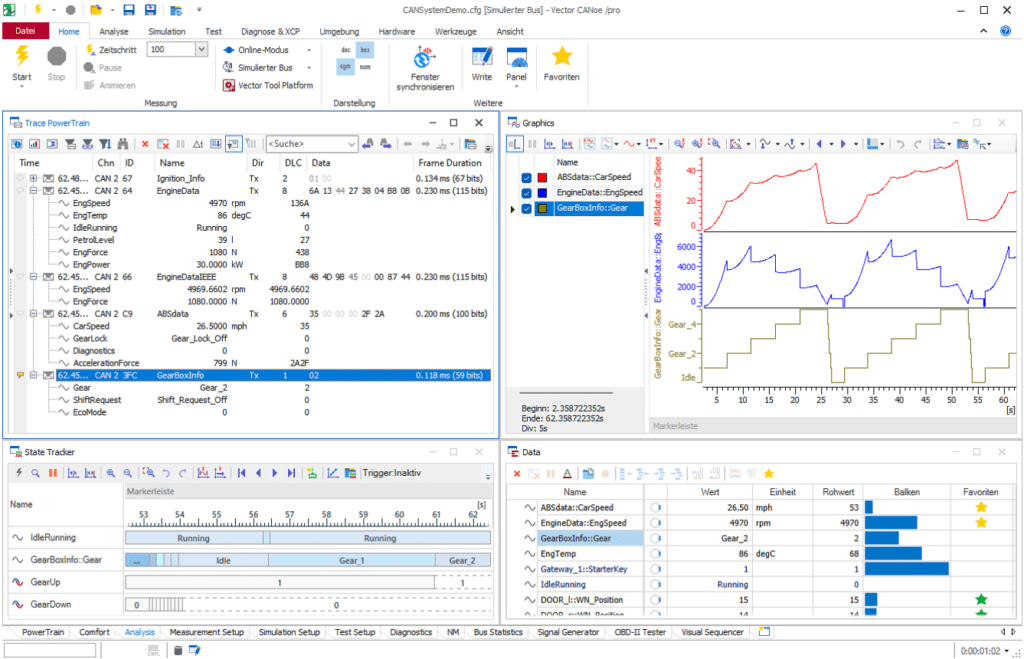
Beyond diagnostics, CANoe also offers scripting capabilities that allow users to automate testing scenarios, an essential feature for handling the complexities of modern vehicles with multiple ECUs. Engineers can create extensive simulation models for vehicle networks and even generate fault scenarios to validate ECU responses, making it invaluable for robustness testing. The tool’s modularity and integration with other Vector products like CANalyzer enhance its versatility, allowing CANoe to be tailored for a range of applications from ECU calibration to embedded software testing.
02. ETAS INCA:
ETAS INCA is a powerful tool mainly used for calibration, data acquisition, and diagnostics of vehicle ECUs, supporting a wide range of protocols, including UDS. It is extensively used in both development and testing environments to perform detailed data logging, real-time calibration, and testing of vehicle subsystems. INCA’s strong UDS support enables engineers to execute diagnostic commands, read sensor data, and capture ECU performance metrics, providing insights into the behavior of the system under various conditions.

INCA is especially valuable in calibration settings where engineers need to adjust parameters and immediately observe the effects on the ECU’s operation. Integrated with ETAS’s hardware, it can interact with HiL (Hardware-in-the-Loop) setups, enabling diagnostic tests to be conducted under realistic vehicle conditions. With extensive support for high-speed data acquisition and automation, INCA is a go-to tool for calibration engineers in powertrain, transmission, and hybrid systems development.
03. Vector CANalyzer:
CANalyzer is another diagnostic and analysis tool from Vector, which shares several functionalities with CANoe but is primarily focused on network analysis. It allows users to monitor, analyze, and debug CAN network traffic and is widely used to validate UDS diagnostics by observing UDS message exchange in real time. CANalyzer helps engineers detect and troubleshoot communication issues, making it ideal for verifying UDS commands like fault code reading and parameter setting on individual ECUs.
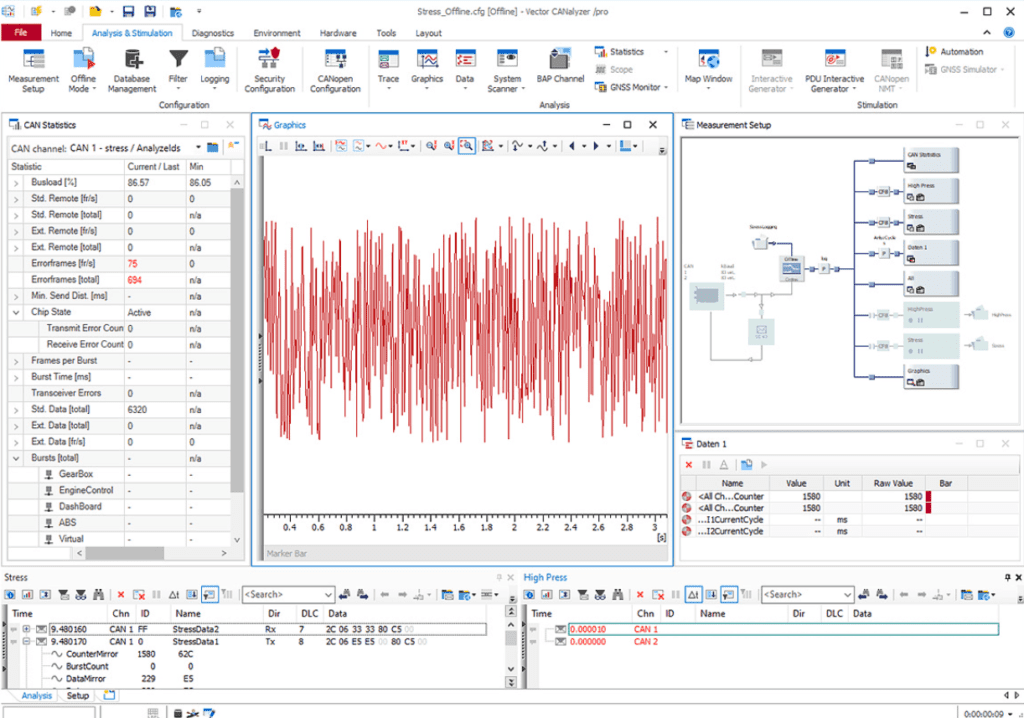
One of CANalyzer’s strengths lies in its ability to provide deep insight into CAN bus interactions, where engineers can create custom filters, triggers, and scripts to automate and refine their analysis. Although simpler than CANoe in terms of simulation capabilities, CANalyzer remains an essential tool for UDS diagnostic tasks that require extensive data monitoring and fast issue detection, particularly valuable in field testing and in-vehicle debugging.
04. DTS Monaco and DTS Venere:
DTS Monaco and DTS Venere, developed by Softing, are tailored for diagnostic and testing applications, especially in UDS-based environments. DTS Monaco is used for comprehensive diagnostics on ECUs, as well as supporting services like fault code reading, parameterization, and programming. Its graphical interface is intuitive, allowing engineers to perform complex diagnostic tasks efficiently. DTS Venere is a simpler tool often employed for rapid UDS service validation during development.

DTS Monaco’s strength is in its configurability and support for OEM-specific UDS protocols, making it popular with automotive brands that need tailored diagnostic solutions. It can also integrate with ODX (Open Diagnostic Data Exchange) files, which standardize diagnostic procedures across ECUs. This standardization allows engineers to easily configure and apply diagnostic procedures across different vehicle models, enhancing efficiency and interoperability in diagnostics.
05. ODIS (Offboard Diagnostic Information System):
ODIS is the official diagnostic tool used by the Volkswagen Group (VW, Audi, Skoda, and SEAT) for UDS-based diagnostics and programming. It supports full-service diagnostics on vehicles, enabling UDS commands to be executed for DTC reading, ECU programming, software updates, and adaptation of control modules. With ODIS, service technicians can perform all UDS functions necessary for maintenance and repairs within the Volkswagen group ecosystem.
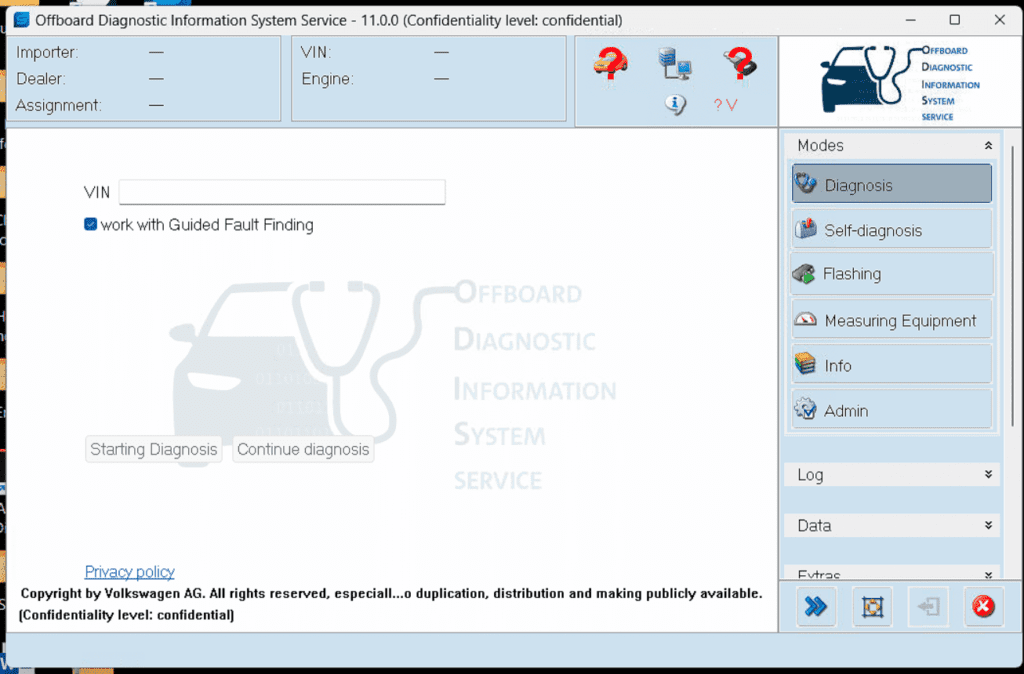
ODIS offers connectivity to vehicle databases, allowing for streamlined updates and configuration downloads. Its tailored design for VW Group vehicles allows for efficient diagnosis and fault resolution, contributing to smoother service and repair processes. The integration with VW’s backend systems enables remote diagnostics and reporting, further enhancing the tool’s value in the workshop.
06. AVL PUMA:
AVL PUMA is an automation platform for testing powertrains, which includes support for UDS diagnostics. It is primarily used in engine and powertrain testing labs to conduct diagnostics on ECUs during controlled test cycles. Engineers rely on PUMA to monitor engine performance log data and conduct UDS-based diagnostics, which is essential in validating and calibrating powertrain components under various load conditions.

PUMA’s ability to integrate with other AVL tools and hardware enables seamless testing of UDS functionalities across different test scenarios. In powertrain testing, where precision and reliability are crucial, PUMA ensures that diagnostic commands are executed consistently, enabling early detection of potential issues in engines and transmissions before deployment into vehicles.
07. Kvaser CAN Tools:
Kvaser provides hardware and software tools for CAN network analysis, supporting UDS diagnostics through third-party software integration. Kvaser’s CAN interfaces, such as Leaf and Eagle, are compatible with various diagnostic software, allowing engineers to use UDS services on their existing setups. Known for their robustness and ease of use, Kvaser tools are often found in testing labs and development environments for UDS message analysis and network troubleshooting.
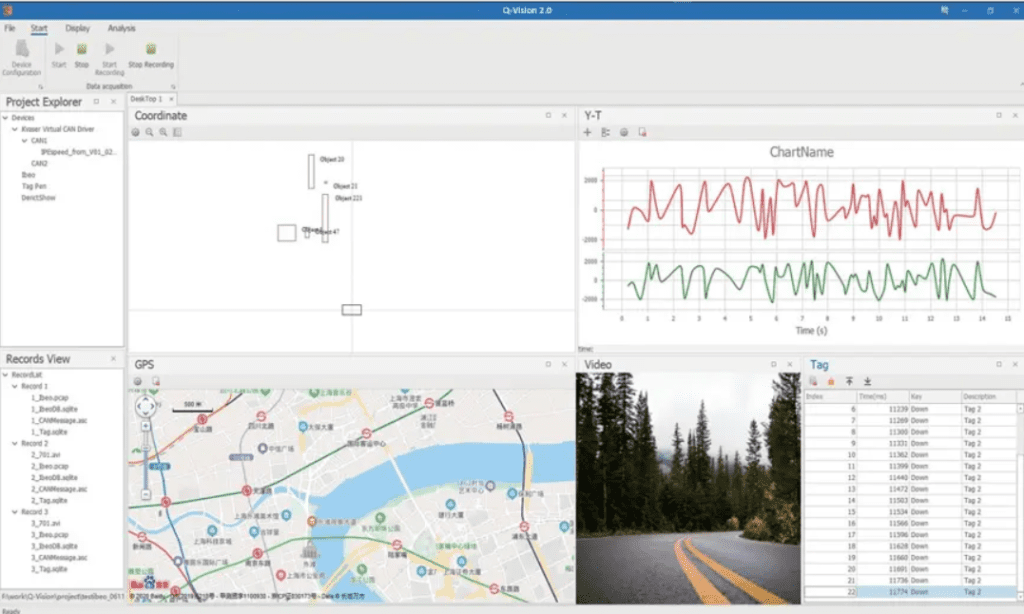
These CAN tools allow automotive professionals to capture and analyze network traffic, perform troubleshooting on communication errors, and validate UDS protocol implementations in-vehicle ECUs. Kvaser’s hardware products are widely compatible with other diagnostic software, making them a flexible option for engineers needing reliable CAN interface solutions for UDS diagnostics.
08. DiagRA MCD Toolset:
DiagRA MCD Toolset by RA Consulting is designed specifically for diagnostic and testing applications, particularly in ECU development and UDS-based diagnostics. It includes several modules for diagnostic communication, configuration, and testing, allowing engineers to perform UDS commands, read DTCs, and validate ECU responses during development. The toolset is highly modular, providing the flexibility to adapt to various diagnostic requirements across different vehicle models.
One key advantage of DiagRA is its comprehensive logging and analysis capabilities, which enable engineers to analyze UDS communication for performance, fault analysis, and compliance. Its compatibility with automotive standards like ODX also ensures that diagnostic procedures are transferable across vehicle models and systems, streamlining the testing process for development and ensuring consistent quality control.
This was about “Tools Used For Unified Diagnostics Services”. Thank you for reading.
Also, read:
- 100 + Electrical Engineering Projects For Students, Engineers
- 1000+ Electronics Projects For Engineers, Diploma, MTech Students
- 1000+ MATLAB Simulink Projects For MTech, Engineering Students
- 50 Advanced Level Interview Questions On CAPL Scripting
- 500+ Embedded System Projects For Engineer, Diploma, MTech, PhD
- 500+ Projects For Diploma Electrical, Electronics Student, Diploma Project
- 8051 Microcontroller Timers, TCON Register, TMOD Register
- A Complete Guide To FlexRay Automotive Protocol

